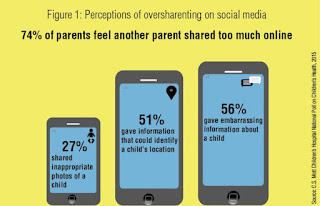This July, marked a new chapter in my formal education as a healer, when I began a year-long fellowship in Hospice and Palliative Care Medicine. I'm thrilled to have the opportunity for this training and hope to someday join the ranks of those board certified in both Surgery and Hospice and Palliative Care Medicine. While the combination of surgery and palliative care seems to surprise many, it was actually a Canadian surgeon and urologic oncologist, Balfour Mount, who first forged the concept of "palliative medicine." Surgeons including Geoffrey Dunn, Robert Milch and Anne Mosenthal have spread the ideals surgical palliative care in the United States, by espousing their importance through the ACS and other surgical organizations. I'm grateful for visionary surgeons Red Hoffman, Pringl Miller, Buddy Marterre and founding the Surgical Palliative Care Society.
With hopes to inspire more synergy in surgery and palliative care, I share my personal statement:
My interest in Palliative Care has always been deeply interwoven in my dream of becoming a surgeon. As a first year medical student, I understood doctors to be professionals skilled at making patients “feel better.” I believed surgical training would provide the broadest skillset to relieve patients’ suffering. As a third year medical student however, I quickly realized the misdirection of my perspective. I was initially perplexed to witness modern medicine’s prioritization of curing disease and prolonging life over the amelioration of suffering. I didn’t understand why costly interventions were performed without a moment’s consideration for the discomfort they inflicted, when low cost treatments for symptom management and pain control weren’t even considered.
Then I learned about palliative care. The interdisciplinary, patient-centered nature and focus on comfort and relief of suffering made sense to me. Addressing “total pain”, inclusive of physical, emotional, spiritual, and social realms enables the ease of suffering that had been intuitive to me. My only question was why these goals and skill set would be limited to palliative care physicians. In fourth year, I spent two weeks with the palliative care service. It was encouraging to observe how services provided by the palliative care team facilitated treatment of the whole patient. I found the privilege of guiding patients and their families through end of life decisions on par with the privilege of operating to return patients from the brink of death. Still I remained steadfast in my pursuit of becoming a surgeon and aspired to be equally skilled at alleviating suffering and enabling dignity when death is inevitable.
Three years into general surgery residency, I am that much closer to realizing my dream. The exhilaration I feel each time I hold the scalpel reaffirms my career path. Poignant moments in patient care strengthen my aspirations to treat total pain and support patients and their loved ones through the passage of death. I will never forget intern year and the patient brought in by EMS with a nonpalpable pulse after a motor vehicle collision. Our heroic efforts in CPR brought her back multiple times during the primary trauma survey. When she finally maintained a pulse long enough to complete the CT scan, an obvious discontinuity in her cervical spine explained her lack of sympathetic tone, rendering her demise unavoidable. As soon as we showed her parents the CT scan and explained her prognosis, they asked that we cease resuscitation. With the medical team no longer surrounding all sides of the patient, her family was able to hold her hands and kiss her cheeks as they each took their moment to say goodbye.
It saddens me not every death I’ve witnessed has played out so peacefully. At present, primary palliative care is not a proficiency required of trauma and acute care surgeons. I find this paradoxical in light of the deep surgical roots of palliative care. Fifty years ago, it was a urologic oncologist, Balfour M. Mount, MD, who introduced and championed the field of palliative medicine. The American College of Surgeons established a committee on surgical palliative care in 2003. Yet the implementation of palliative care principles into trauma ICU care and an alliance between surgeons and palliative care clinicians has been slow to non-existent. The potential for synergy at the intersection of surgery and palliative care inspires me to become a trauma surgeon trained in palliative care. I can imagine no greater honor than to operate on trauma survivors and support their loved ones through their time of crisis.
Training in palliative care will provide me the tools I need to palliate my patients both before surgery, and after. Surgical treatment is unique in that it often causes significant pain and suffering before patients experience long term benefit. It is imperative I have tools to minimize post surgical suffering and pain. It is equally important I am facile in supporting patients and their families in making medical decisions reflective of their goals and the richness of their life experience. Whether it be the 94 year old woman with intracranial hemorrhage secondary to falling while on anticoagulation, or the 30 year old construction worker who fell from the second story, the decision to discontinue artificial life support is never easy or straight forward. In the words of Cicely Saunders, “How people die remains in the memory of those who live on.” As a future trauma and critical care surgeon it is an unachievable goal to cure every disease or traumatic injury; my goal as a surgeon is to heal patients and their loved ones, in life as well as death.














